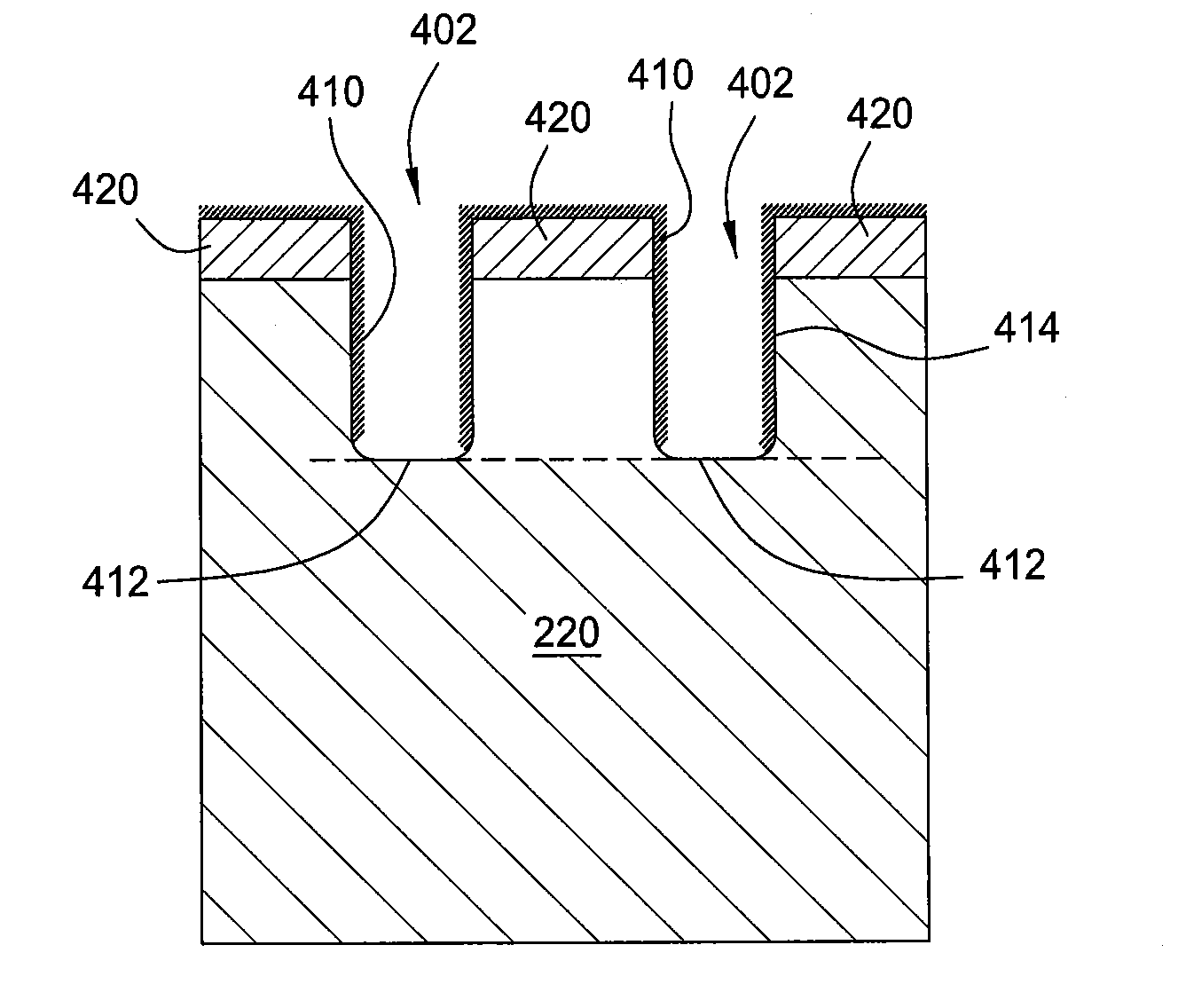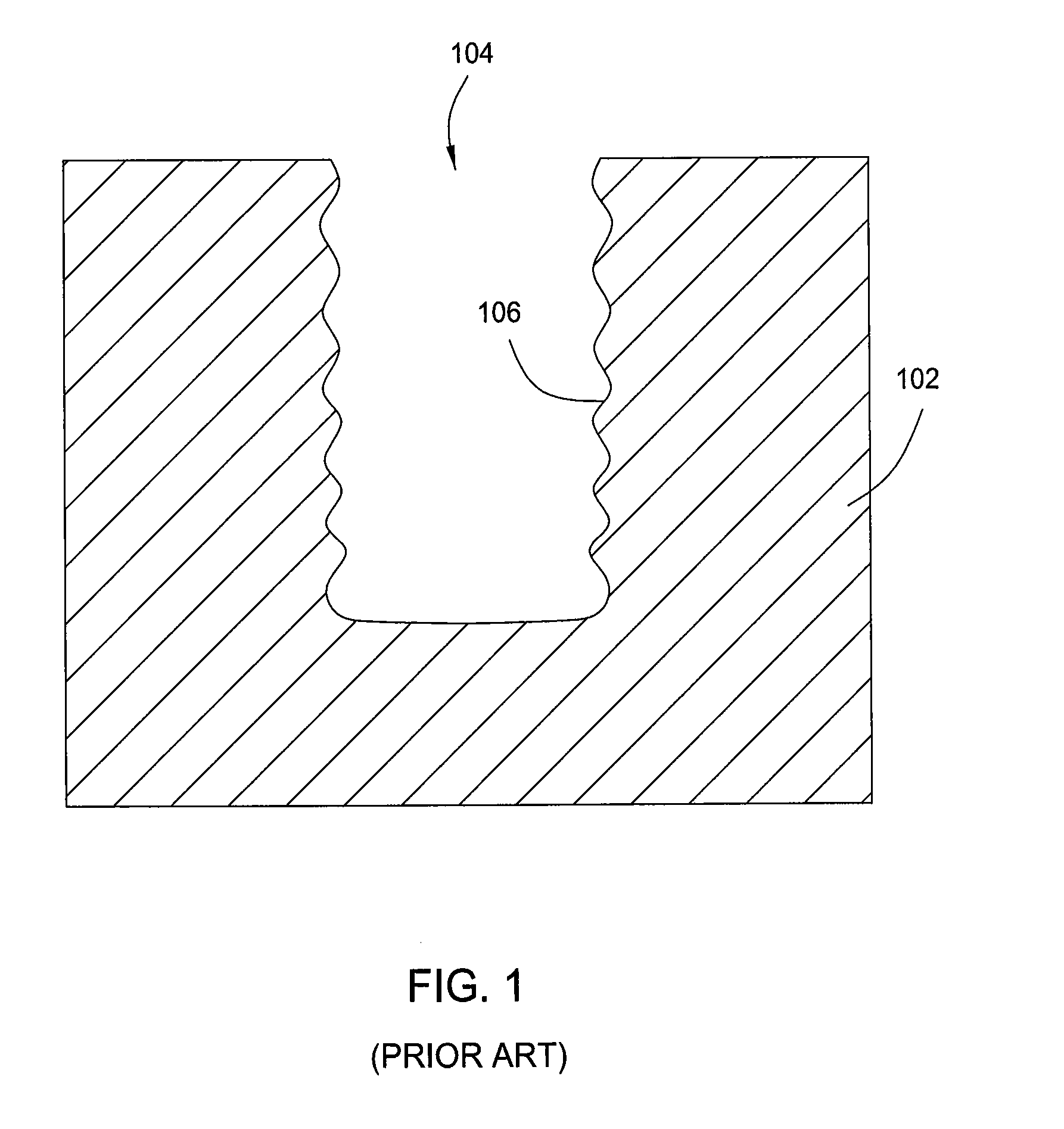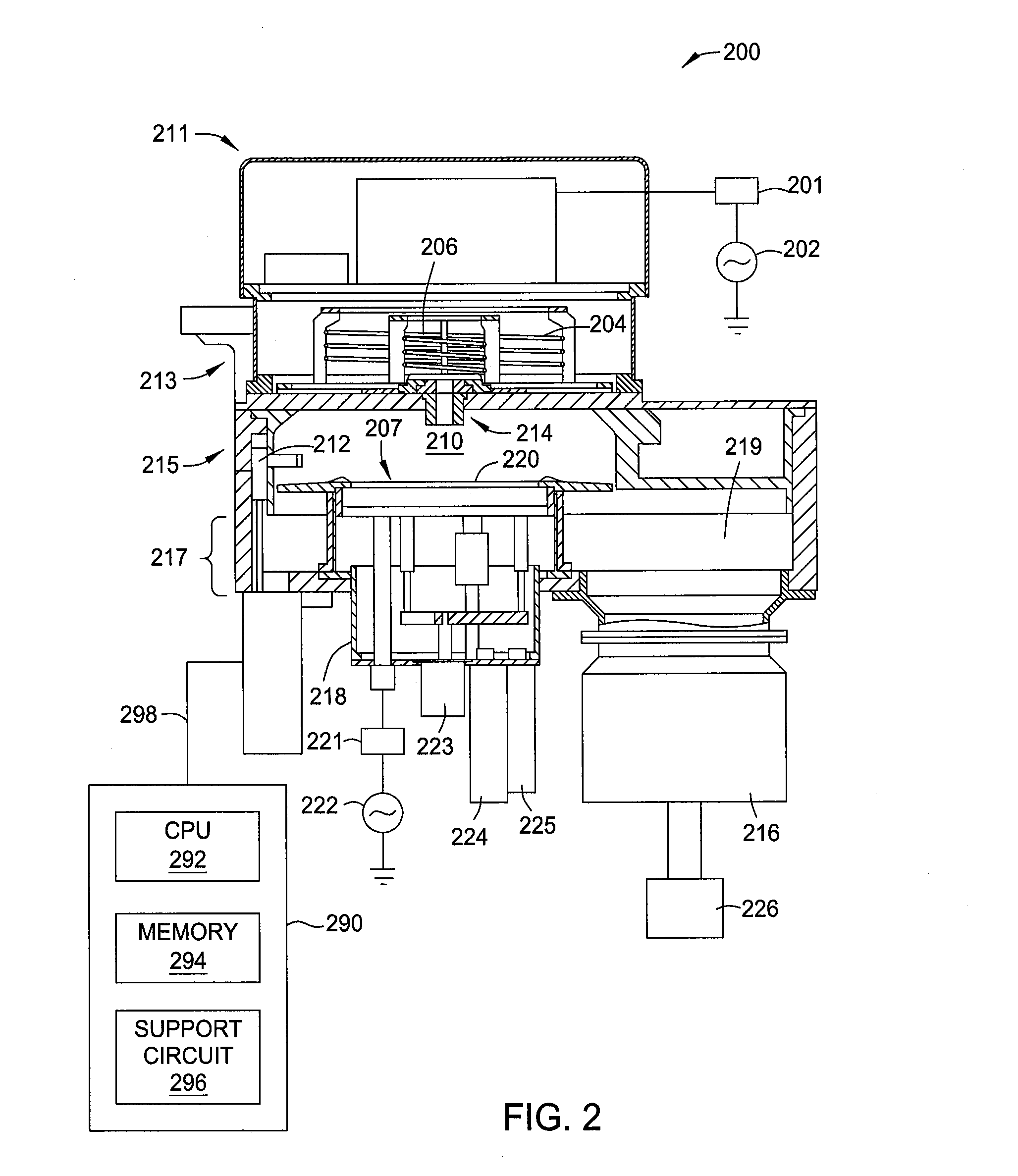Methods for etching through-silicon vias with tunable profile angles
a technology of throughsilicon vias and profile angles, which is applied in the direction of semiconductor/solid-state device manufacturing, basic electric elements, electric devices, etc., can solve the problems of device failure, difficult sidewall surface, and strict control of etch profile, and achieve low process pressure, good sidewall profile, and high rf bias power
- Summary
- Abstract
- Description
- Claims
- Application Information
AI Technical Summary
Benefits of technology
Problems solved by technology
Method used
Image
Examples
Embodiment Construction
[0019]The present disclosure provides methods for etching through-silicon vias (TSVs) in a substrate. The method employs a protective cyclic polymer passivation deposition, depassivation process and plasma etching process. By alternating the duration of the plasma etching process and polymer passivation deposition process during the TSVs formation process, a good sidewall profile and via depth control may be obtained. In one embodiment, the good sidewall profile and via depth may be controlled by maintaining a relatively low process pressure and relatively high RF bias power during the polymer passivation deposition process so as to maintain a desired anisotropic etching process until a desired sidewall profile and via depth is reached.
[0020]FIG. 2 depicts a schematic isometric view of a processing chamber 200 that may be used in conjunction with embodiments of the present invention to perform a TSV etching process. The TSV etching process may be practiced in a DPS II TSV processing...
PUM
 Login to View More
Login to View More Abstract
Description
Claims
Application Information
 Login to View More
Login to View More - R&D
- Intellectual Property
- Life Sciences
- Materials
- Tech Scout
- Unparalleled Data Quality
- Higher Quality Content
- 60% Fewer Hallucinations
Browse by: Latest US Patents, China's latest patents, Technical Efficacy Thesaurus, Application Domain, Technology Topic, Popular Technical Reports.
© 2025 PatSnap. All rights reserved.Legal|Privacy policy|Modern Slavery Act Transparency Statement|Sitemap|About US| Contact US: help@patsnap.com



